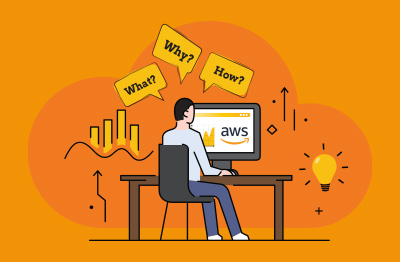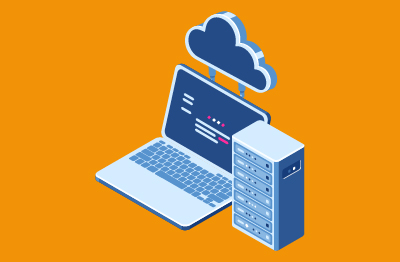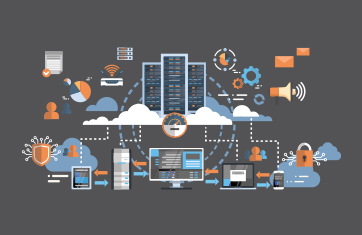AWS (Amazon Web Services)
What is AWS?
Amazon Web Services (AWS) is one of the most comprehensive and broadly adopted cloud service providers in the industry, offering over 200 fully featured services from data centers globally. A large spectrum of clients across verticals uses AWS to lower costs, become more agile and innovate faster. A recent survey estimates that AWS is the largest cloud service provider and accounts for 45% of the worldwide cloud services market.
AWS services
While AWS provides a vast spectrum of services, it can be challenging to determine the right services for your needs. Check out this article, which provides details of the top 10 most popular service offerings from AWS (including AWS EC2, AWS RDS, and more) and how they map to different business needs.
How does AWS work?
AWS is a cloud computing platform that allows individuals and businesses to forgo investing upfront capital in their own data storage infrastructure and instead move it offsite to Amazon’s servers.
AWS servers are regional, with each region isolated for maximum fault tolerance. Regions are then divided into multiple isolated availability zones, each containing multiple physically separate data centers.
AWS also uses local zones, which extend their regional zones and allow for storage resources to be placed even closer to users. Amazon believes that this practice is one of the most significant advantages of AWS, as it offers greater redundancy.
The AWS system has three separate categories:
- EC2: provides secure and scalable compute capacity
- Glacier: long-term storage designed for data archiving
- S3 (Simple Storage Service): high-speed cloud storage
These three solutions can be customized according to each user’s need for data storage, AWS monitoring, analytics, compliance, and more.
Who uses AWS?
In 2022, technology intelligence giant HG Insights reported that there were 1.45 million AWS users across the globe. Netflix is among those millions of users; the streaming giant signed up for AWS in 2009 and has spent almost $20 million monthly to run most of its technology operations on AWS’s EC2 services.
Other well-known enterprise brands that use Amazon Web Services include the following:
Meta (formerly known as Facebook), Adobe, BBC, Twitch, Salesforce, Airbnb, Pfizer, Kellogg’s, McDonald’s.
According to Amazon, over 90% of Fortune 100 companies and over half of Fortune 500 companies use AWS. However, large corporations are not the only ones reaping the benefits of AWS.
Amazon offers a time- and feature-limited free tier of AWS services that is ideal for individuals to gain hands-on experience with their services. The company also provides services designed specifically for small business users.
What is AWS cloud monitoring?
After applications are deployed in the cloud, their performance has to be monitored. When users complain that the applications are slow, your IT team needs to be able to troubleshoot and diagnose these problems. This is where AWS monitoring comes in. Broadly, AWS monitoring focuses on tracking the availability and performance of key applications you have hosted on AWS cloud. It also tracks the usage, availability, and performance of the AWS services that your applications may be using. AWS monitoring also should cover real-time monitoring, diagnosis, and historical analytics to assist IT operations and architect teams.
Why is AWS cloud monitoring important?
Proactive monitoring and rapid diagnosis is a must for most organizations deploying applications in the cloud. Every minute of application downtime or slowness costs your organization money. And if your applications don’t work well in the cloud, you may need to move them back to an on-premises infrastructure. After all, end users care about application performance, not about where the application is hosted and what infrastructure it uses. Learn more about AWS Cloud monitoring from eG Innovations.




